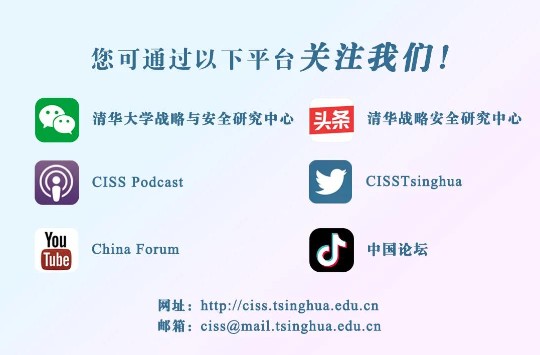达巍:清华大学战略与安全研究中心副主任、清华大学国际关系学系教授

中美关系自2018年5月特朗普政府发动贸易战以来不断下滑,2021年1月拜登上任后也一直徘徊不前,如今终于出现了一些积极势头。华为公司高管孟晚舟被释放回国,拔出了中美关系中的一个深深的“刺”。两国高级外交官在苏黎世举行了富有成效的会晤,贸易、气候和军事团队也开始恢复接触。特别重要的是,习近平主席与拜登总统有望在今年年内举行线上峰会。那么现在的问题是,北京和华盛顿能走多远?应当如何走?
显而易见,当前中美关系的缓和并不能把我们带回2018年之前。回望历史,50年前,由于华盛顿和北京都需要制衡苏联威胁,两国在现实主义思维推动下打破了双边关系的坚冰。
约30年前,美国试图在冷战后向全球扩展新自由主义政治经济模式,而中国也希望搭上全球化的快车实现现代化,两国关系在“接触”战略下得到极大深化与拓宽。经过以上两个阶段后,中美关系在2017年底走入50年来的第三个阶段,“竞争”成为最突出的特征。没人知道这一阶段将持续多久,但显然目前的“回暖”是在“竞争”框架内的战术调整。
与很多人一样,笔者十分怀念过去相对积极的中美关系。但这种感情带来的不切实际的期待,可能导致我们高估中美关系此轮回暖的战略意义。实际上,把握当前中美关系,也许更需要清醒的头脑和对现状恰如其分的评估。
中美关系近期的积极势头,可能是两国关系重构过程中的重要一步。中美关系从2017年底开始从原来的“接触”框架向“竞争”框架调整,随后两国关系快速恶化。四年过去后,双方似乎都认识到,两国关系整体框架的调整已不可避免,但竞争失控并滑向对抗和冲突,并不符合任何一方的利益。习近平主席指出,中美之间应该是“你追我赶的田径赛”,而不是“你死我活的角斗赛”。
美方官员也强调要进行“不至引起灾难的竞争”,要给中美关系装上“扶手”。近期中美关系回暖,实际上是双方试图控制竞争的性质、范围与程度。把过去几年中美关系的恶化与近期中美关系的回暖拼接在一起,才能构成一个真正完整的“竞争”框架。
2022年中国将有国内重要政治议程,美国也将举行至关重要的中期选举。两国重要的国内政治议程安排意味着,如果一切顺利,本轮回暖势头大概也只能持续到明年秋季。在未来的大半年内,中美两国有很多事情要做。
华盛顿与北京在双边关系上最紧迫的议程,是在有限的时间里全面激活两国的官方对话。哪怕这些对话极为困难,短期内难以取得成果,也需要恢复对话的气氛和习惯,让两国各领域的官员即便在高度紧张的气氛下也能保持高频度对话,这对管控中美竞争至关重要。

中国很多人认为,当前中美关系的缓和是中方前一阶段对美方坚持强硬立场取得的成果。这与美方的认知相去甚远。美国方面很多人认为他们才是掌握战略主动的一方,目前两国关系正按照美方设定的目标和节奏发展。无论谁对谁错,中美两国都需要更加准确地把握对方的心态,如果双方都只是按照自己坚信的逻辑推动己方政策,这轮缓和恐怕很难持久。
拜登政府需要尽快采取行动,纠正上届政府遗留下来的一些明显错误的政策。在人文交流、关税等问题上固执己见,对中国的影响有限,对美国国际形象的影响则是深刻的。此外,拜登政府可能需要更加清晰地解释“战略竞争”到底意味着什么。这个概念过分模糊,很多中国人认为美方以这个术语表述自己的战略意图实际上也不够诚实。当然,中国在反对以“战略竞争”定义中美关系的同时,也需要尽快清楚地表明自己支持何种对中美关系的定型与概括。
本文2021年11月4日首发于中美聚焦
------------------------------
China-U.S. Detente: Avoiding Overestimation and Underappreciation

China-U.S. relations, which deteriorated steadily after the Trump administration launched it so-called trade war in May 2018 and have been stagnant since Biden's inauguration in January, have finally shown some positive momentum. The release of Huawei executive Meng Wanzhou pulled out a painful thorn. Ranking diplomats of the two countries held fruitful talks in Zurich, and trade, climate and military teams have begun reestablish contact. Most important, presidents Xi Jinping and Joe Biden are expected to meet virtually by the end of this year, according to the American side. The question now is how far Beijing and Washington will go, and in what direction.
Obviously, the current easing in in China-U.S. ties won’t bring us back to the days before 2018. A much clearer picture emerges when we view bilateral relations from a longer historical perspective. Five decades ago, out of a common need to balance the threat from the Soviet Union, the two countries maneuvered a thaw in their deep-freeze based on realistic thinking. Nearly 30 years ago, driven by neoliberal beliefs, the U.S. attempted to enlarge its political-economic model globally, and China wanted to catch the express train of globalization and realize modernization. Bilateral relations were hence greatly deepened and broadened under a strategy of engagement.
Relations entered a third phase 50 years later, at the end of 2017, when competition became the outstanding feature. Nobody knows how long this stage will last, but evidently the present easing is a tactical adjustment within the new competitive framework. Like many, I miss the period in which the China-U.S. relationship was relatively positive. But the unrealistic expectations fostered by such nostalgia may lead us to overestimate the strategic significance of the current easing. In fact, what is needed today is a proper assessment of the status quo and a cool head.
The recent positive momentum in China-U.S. relations may be one step in the restructuring of bilateral ties in the direction of more sustainable competition. The relationship began a transition from the previous engagement framework to a competitive one in late 2017, after which we have witnessed rapid worsening. Four years later, both sides seem to have come to realize that a paradigm shift in bilateral ties is already inevitable. Yet, once competition gets out of control and slides toward confrontation and conflict, neither party will be served. As President Xi pointed out, there should be an athletic game in which China and the U.S. chase each other, instead of a wrestling contest in which one lives and the other dies.
American officials have also emphasized that they want competition without catastrophe, and to equip the relationship with guardrails. The latest bilateral easing indicates that both sides are trying to control the nature, scope and extent of competition and to install those guardrails. A picture of the competition would be incomplete without piecing together the deterioration of bilateral ties over the past few years, while noting the latest easing.
China is expected to have its important domestic political agenda in 2022, when the U.S. will have its critical midterm elections. The significant domestic political agendas in both countries mean that even if everything goes well, the energy and resources that the two sides can invest to support a positive bilateral relationship will decrease by autumn. A lot needs to be done with respect to bilateral ties in the coming months.
The most pressing task for Washington and Beijing is to revitalize official dialogues in a comprehensive manner, and as quickly as possible. No matter how difficult such a dialogue will be, and even if no outcome can be expected in the near term, the atmosphere and habits for dialogue need to be restored, so that officials in all fields from both countries can maintain high-frequency communication, even under extremely tense circumstances. This is essential to managing China-U.S. competition.
Many Chinese believe the present easing is the outcome of the Chinese side's insistence on a tough response against the U.S. — a response dramatically different from American perceptions. Many people in the U.S. believe they are the side of strategic initiative, and that the relationship is proceeding in the direction, and at the pace, the U.S. has set. No matter which view is true, both parties need to understand the other’s perspective and calculation more accurately. If both sides push only their own policies following their own logic, this round of easing won’t last long.
The Biden administration needs to move swiftly to correct some obviously mistaken policies that the previous administration left behind. Intransigence on such matters as people-to-people exchanges and tariffs will have limited impact on China but will have profound negative influence on the U.S. image internationally. In addition, the Biden administration may need to more clearly explain what strategic competition actually means. Because the concept is ambiguous, many Chinese believe the phrase is just a cover and that the real intention of the U.S. side is much more negative. Of course, the Chinese side also needs to clarify what kind of bilateral relations it believes in and supports, even as it opposes defining the China-U.S. relationship as one of strategic competition.
Da Wei,Deputy Director at Center for International Security and Strategy, Professor at Department of International Relations, Tsinghua University
The article was first published on the website of China Focus.

